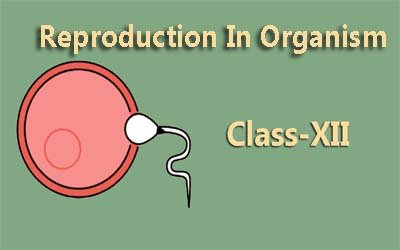The Living World - Class 11
 Compare
Compare
The Living World, typically covered in Class 11 Biology, is the foundation for your understanding of life science. This chapter dives into the vast diversity of living organisms on Earth, exploring their characteristics and how scientists classify them.
Here's a short breakdown of what you'll encounter in this chapter:
What is the Living World? It encompasses all the amazing organisms, from the single-celled bacteria to the towering trees and the majestic whales, that inhabit our planet. This incredible variety of life thrives in all sorts of environments, from the scorching deserts to the icy tundras.
Characteristics of Living Things: There are seven common characteristics that all living organisms share. These include:
Order – They are highly organized structures with complex systems working together.
Growth and Development – They can increase in size and complexity throughout their lifespan.
Reproduction – They can create new individuals, ensuring the continuation of their species.
Metabolism – They can take in nutrients from their environment, break them down, and use them for energy and growth.
Responsiveness – They can sense and react to stimuli from their surroundings.
Homeostasis – They can maintain a stable internal environment despite external changes.
Adaptation – They can evolve over time to better suit their environment.
Biodiversity: This refers to the amazing variety of life on Earth, encompassing the immense number of species, their genetic variation, and the ecosystems they inhabit. Biodiversity is crucial for the health of our planet, as it ensures the proper functioning of ecosystems and provides us with essential resources like food, medicine, and clean air.
Taxonomic Classification: Scientists have developed a system called taxonomy to classify living things into hierarchical groups based on their shared characteristics. This system helps us organize the vast diversity of life, understand the relationships between different organisms, and communicate effectively about them. The major taxonomic categories are kingdom, phylum, class, order, family, genus, and species.
দ্য লিভিং ওয়ার্ল্ড, যা সাধারণত একাদশ শ্রেণীর জীববিজ্ঞানে অন্তর্ভুক্ত, হল জীবন বিজ্ঞান সম্পর্কে আপনার বোঝার ভিত্তি। এই অধ্যায়ে পৃথিবীর জীবন্ত প্রাণীর বিশাল বৈচিত্র্য, তাদের বৈশিষ্ট্য এবং বিজ্ঞানীরা কীভাবে তাদের শ্রেণীবদ্ধ করেন তা অন্বেষণ করা হয়েছে।
এই অধ্যায়ে আপনি যা সম্মুখীন হবেন তার একটি সংক্ষিপ্ত বিবরণ এখানে দেওয়া হলঃ
জীবন্ত জগৎ কী? এটি আমাদের গ্রহে বসবাসকারী এককোষী ব্যাকটেরিয়া থেকে শুরু করে উঁচু গাছ এবং রাজকীয় তিমি পর্যন্ত সমস্ত আশ্চর্যজনক জীবকে অন্তর্ভুক্ত করে। জীবনের এই অবিশ্বাস্য বৈচিত্র্য জ্বলন্ত মরুভূমি থেকে শুরু করে বরফের তুন্দ্রা পর্যন্ত সব ধরনের পরিবেশে বিকশিত হয়।
জীবের বৈশিষ্ট্যঃ সাতটি সাধারণ বৈশিষ্ট্য রয়েছে যা সমস্ত জীবের মধ্যে রয়েছে। এগুলোর মধ্যে রয়েছেঃ
অর্ডার-এগুলি অত্যন্ত সংগঠিত কাঠামো যা জটিল ব্যবস্থাগুলি একসাথে কাজ করে।
বৃদ্ধি এবং বিকাশ-তারা তাদের জীবনকাল জুড়ে আকার এবং জটিলতায় বৃদ্ধি করতে পারে।
প্রজনন-তারা তাদের প্রজাতির ধারাবাহিকতা নিশ্চিত করে নতুন ব্যক্তি তৈরি করতে পারে।
বিপাক-তারা তাদের পরিবেশ থেকে পুষ্টি গ্রহণ করতে পারে, তাদের ভেঙে ফেলতে পারে এবং শক্তি ও বৃদ্ধির জন্য তাদের ব্যবহার করতে পারে।
প্রতিক্রিয়াশীলতা-তারা তাদের চারপাশের উদ্দীপনাগুলি অনুধাবন করতে এবং প্রতিক্রিয়া জানাতে পারে।
হোমিওস্ট্যাসিস-বাহ্যিক পরিবর্তন সত্ত্বেও তারা একটি স্থিতিশীল অভ্যন্তরীণ পরিবেশ বজায় রাখতে পারে।
অভিযোজন-তারা সময়ের সাথে সাথে তাদের পরিবেশের সাথে আরও ভালভাবে খাপ খাইয়ে নিতে পারে।
জীববৈচিত্র্যঃ এটি পৃথিবীর জীবনের বিস্ময়কর বৈচিত্র্যকে বোঝায়, যা বিপুল সংখ্যক প্রজাতি, তাদের জিনগত বৈচিত্র্য এবং তারা বসবাস করে এমন বাস্তুতন্ত্রকে অন্তর্ভুক্ত করে। জীববৈচিত্র্য আমাদের গ্রহের স্বাস্থ্যের জন্য অত্যন্ত গুরুত্বপূর্ণ, কারণ এটি বাস্তুতন্ত্রের যথাযথ কার্যকারিতা নিশ্চিত করে এবং আমাদের খাদ্য, ওষুধ এবং পরিষ্কার বাতাসের মতো প্রয়োজনীয় সম্পদ সরবরাহ করে।
ট্যাক্সোনমিক শ্রেণীবিভাগঃ বিজ্ঞানীরা ট্যাক্সোনমি নামে একটি ব্যবস্থা তৈরি করেছেন যাতে জীবিত জিনিসগুলিকে তাদের ভাগ করা বৈশিষ্ট্যের উপর ভিত্তি করে শ্রেণিবদ্ধ গোষ্ঠীতে শ্রেণীবদ্ধ করা যায়। এই ব্যবস্থাটি আমাদের জীবনের বিশাল বৈচিত্র্যকে সংগঠিত করতে, বিভিন্ন জীবের মধ্যে সম্পর্ক বুঝতে এবং তাদের সম্পর্কে কার্যকরভাবে যোগাযোগ করতে সহায়তা করে। প্রধান শ্রেণীবিন্যাসগত বিভাগগুলি হল রাজ্য, পর্ব, শ্রেণী, ক্রম, পরিবার, গণ এবং প্রজাতি।




















